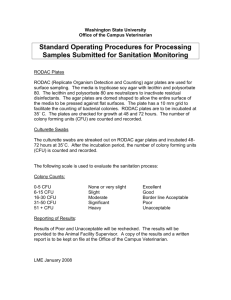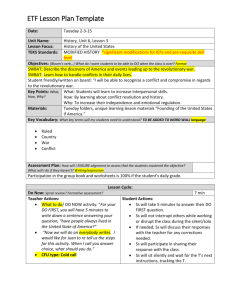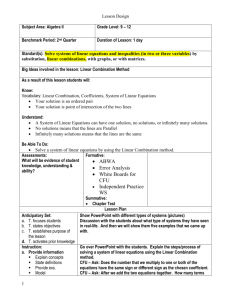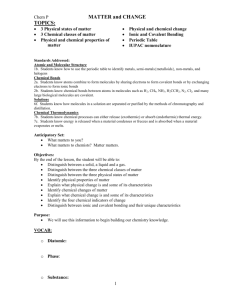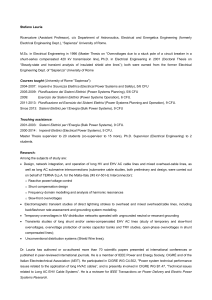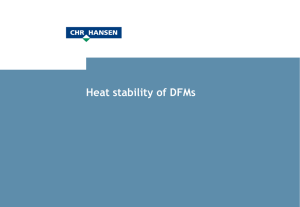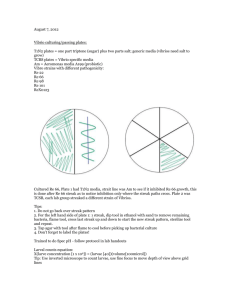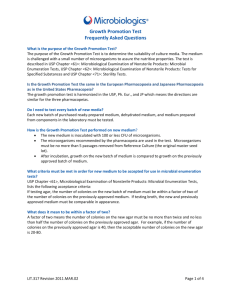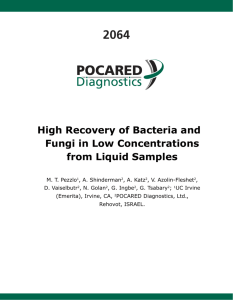Bacteria in Produce—Laboratory Report Guide
advertisement
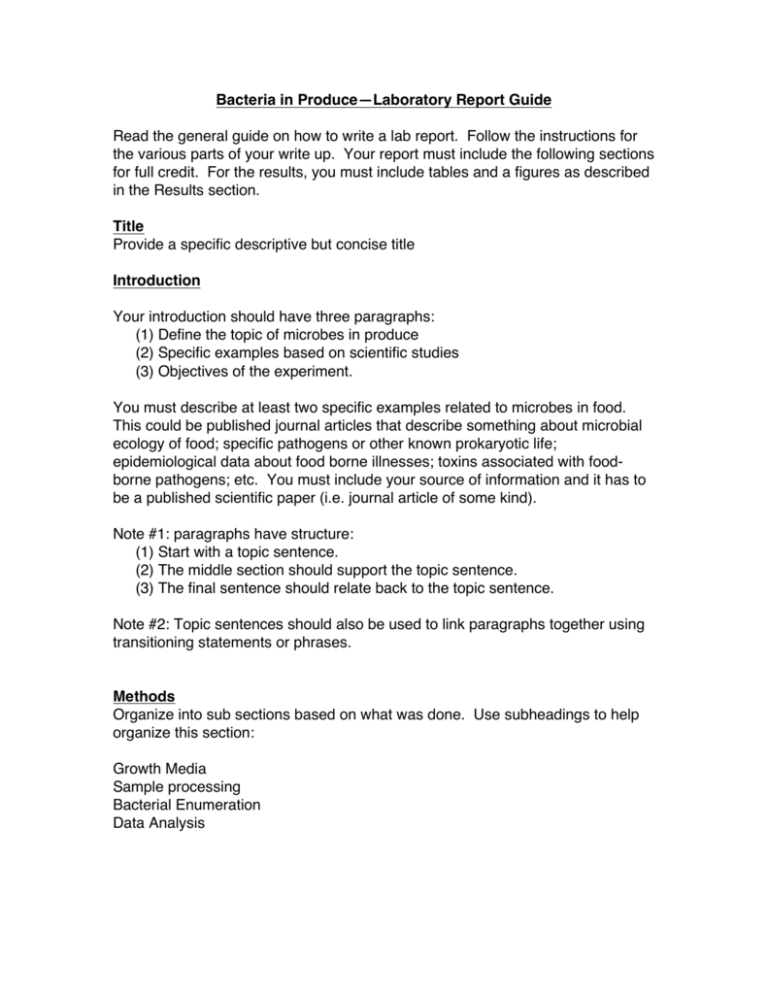
Bacteria in Produce—Laboratory Report Guide Read the general guide on how to write a lab report. Follow the instructions for the various parts of your write up. Your report must include the following sections for full credit. For the results, you must include tables and a figures as described in the Results section. Title Provide a specific descriptive but concise title Introduction Your introduction should have three paragraphs: (1) Define the topic of microbes in produce (2) Specific examples based on scientific studies (3) Objectives of the experiment. You must describe at least two specific examples related to microbes in food. This could be published journal articles that describe something about microbial ecology of food; specific pathogens or other known prokaryotic life; epidemiological data about food borne illnesses; toxins associated with foodborne pathogens; etc. You must include your source of information and it has to be a published scientific paper (i.e. journal article of some kind). Note #1: paragraphs have structure: (1) Start with a topic sentence. (2) The middle section should support the topic sentence. (3) The final sentence should relate back to the topic sentence. Note #2: Topic sentences should also be used to link paragraphs together using transitioning statements or phrases. Methods Organize into sub sections based on what was done. Use subheadings to help organize this section: Growth Media Sample processing Bacterial Enumeration Data Analysis Results: Tables and Figures: Include the following data on separate pages at the end or your report: Table 1. make a table that summarizes the TSB and MacConkey results of unwashed vs. washed CFU/g of each food item analyzed for both sections 223 and 229. Table 2. Make a table that describes the abundance of Gram positive, Gram negative, and Lac+ bacteria for each food sample. Figure 1. A vertical bar graph that shows the affects of washing on CFU/g for each food item. You can leave out the food items that had no detectable CFU/g. You should also have separate bars for the TSB agar and MacConkey agar. You could also have a two-panel figure with an A and B sub-figure. A, for TSB agar and B, for MacConkey agar. Figure 2. Similar to Figure 1, make a graph comparing the presence of Lac+ CFU/g on unwashed vs. washed produce. Notes: each figure and/or table should have a concise and descriptive figure caption. Use a log scale on y-axis if you are reporting CFU/g. Written section Your Results section should describe each table and figure in paragraph form. Address the following points: 1. Bacterial abundance in unwashed produce a. What are the trends in the CFU/g data for unwashed fruits and vegetables? b. Which food item has the most/least CFU/g? c. What did the colonies look like? d. Were there differences in CFU/g for the TSB vs. MacConkey agar for particular samples? 2. Relative abundance of Gram positive vs. Gram negative bacteria for each sample. a. What samples had the greatest/least abundance of Gram + b. What samples had the greatest/least Gram negative bacteria? c. Are there any trends for a particular food type? 3. Relative abundance of Lac+ vs. non-lactose fermenting bacteria? a. Sample questions as above. Describe the samples with the least/most Lac+ bacteria. 4. The effects of washing on bacterial abundance in produce a. What were the effects of washing on CFU/g for each sample? Did the colonies look different than in the unwashed sample? Were there differences in CFU/g for the TSB vs. MacConkey agar for particular samples? Discussion Follow the general laboratory guidelines. In addition, address these points in your discussion: 1. How does your CFU/g, Lac+, and Gram +/- data compare to similar studies done by other scientists? 2. Discuss the effectiveness of washing on reducing CFU/g. Your discussion should reference other scientific studies? 3. Describe associations of certain bacteria with specific produce items. You could also discuss illnesses related with certain food-borne pathogens, or studies that are more ecological. However you focus your discussion, you must provide at least two examples. Use scientific papers to support your discussion. 4. In your conclusion describe what could be done next. References Cite your sources according to the general guidelines. Use the following format: Authors (Last name, first). Year. Title of article. Journal Name. Vol. Page number range. Here is an example: Murphy, J. N., and C. W. Saltikov. 2009. The ArsR repressor mediates arsenite-dependent regulation of arsenate respiration and detoxification operons of Shewanella sp. strain ANA-3. Journal of Bacteriology 191:6722–6731. For in text citations: Shewanella sp. ANA-3 uses an ArsR-type repressor for regulating anaerobic growth on arsenate (Murphy and Saltikov, 2009).
